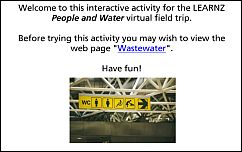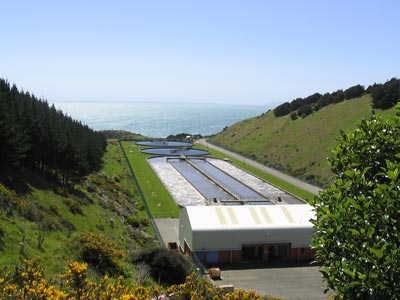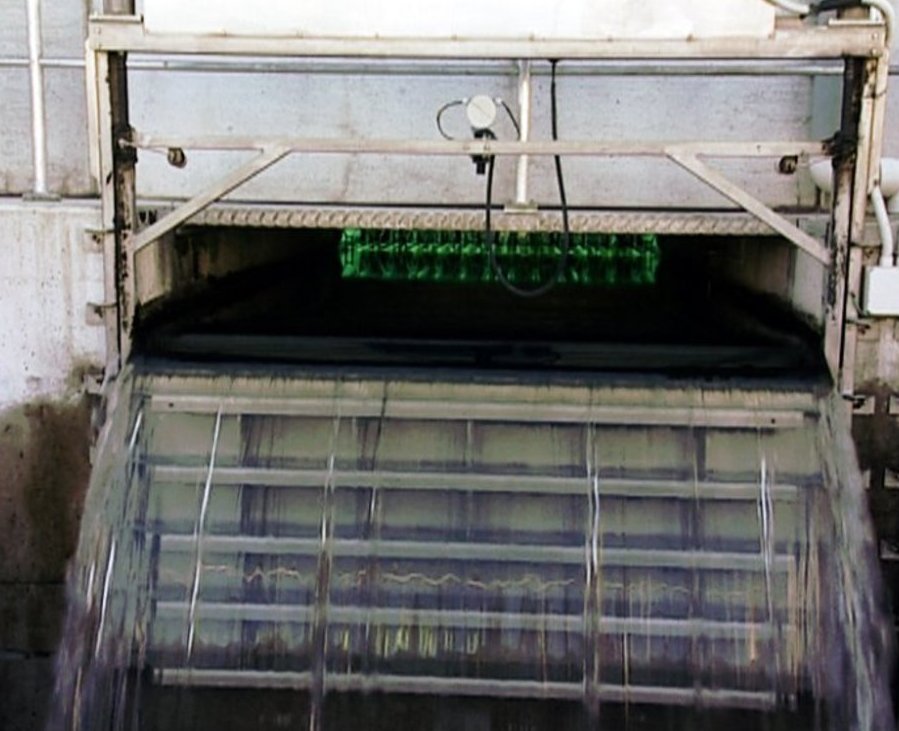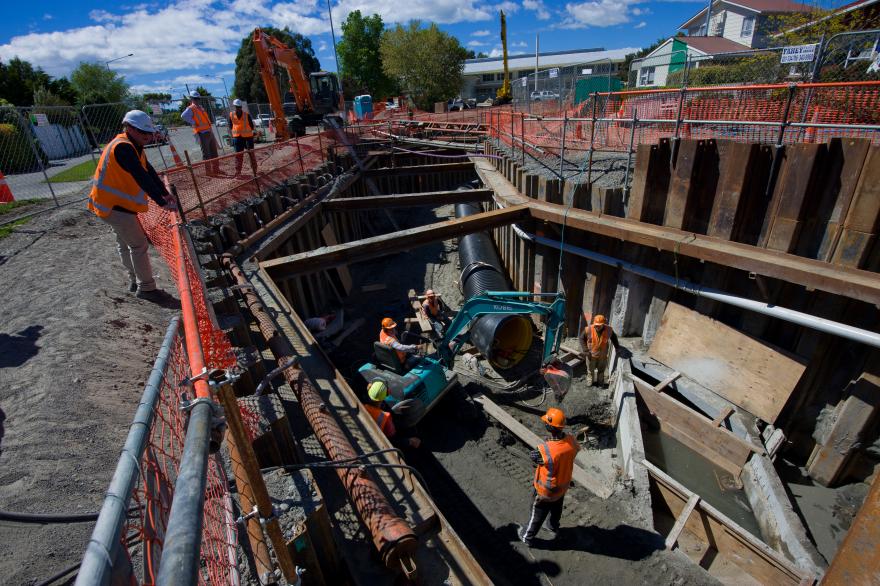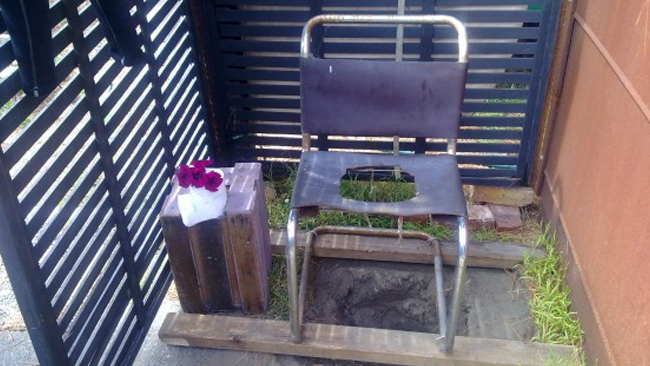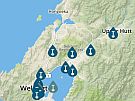Wastewater is all the water we use in our houses and workplaces. Each time you flush the toilet, pull the plug from a sink, or have a shower, the wastewater drains into a sewer pipe on your property. Wastewater pipes are well sealed and buried in the ground.
Can you make a list of everything that goes into your house’s wastewater pipes?
Wastewater, also known as ‘sewage’, is 99.97 percent water as the majority comes from showers, baths, and washing machines. The remainder includes organic matter such as:
- human waste
- food scraps
- fats, oil and grease
- debris such as sand, grit, and plastic
- household chemicals, paint, and pharmaceuticals.
Wastewater treatment in the Wellington region 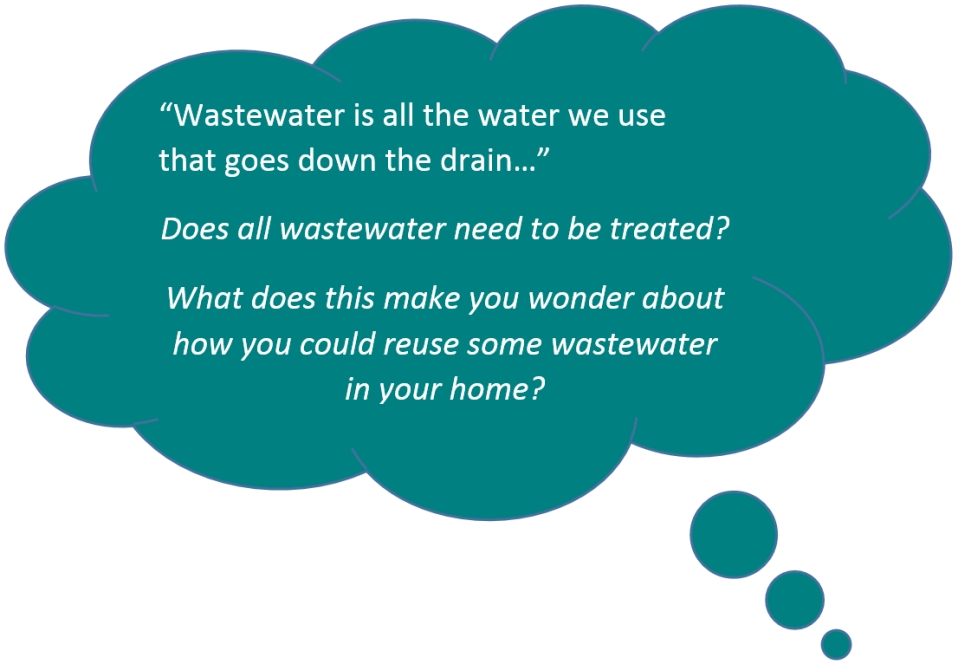
There are four wastewater treatment plants in the Wellington region:
- Moa Point (Wellington)
- Seaview (Upper Hutt and Lower Hutt)
- Porirua
- Western (Karori)
Together, they treat about 140 million litres of wastewater on a typical day, using biological and ultraviolet treatment processes. The treated water is discharged to the sea. The sludge resulting from filtration and treatment is de-watered (with this water further treated) and the solid content is sent to landfills.
Wastewater can be harmful
Wastewater can be harmful to our health and to our harbours and waterways. Wastewater can contain bacteria, fungi, parasites or viruses that can cause serious infections in humans, and harm the environment so effective treatment is very important.
A typical wastewater treatment plant includes three treatments:
- primary treatment to remove solid material
- secondary treatment to digest dissolved and suspended organic material as well as the nutrients nitrogen and phosphorus
- tertiary treatment includes further filtration and disinfection to remove pathogenic bacteria.
The sewage sludge that is removed through wastewater treatment is treated further to remove any water and kill harmful bacteria before it is taken to a landfill. In some treatment plants biogas from the sludge treatment process is used to generate electricity.
Tertiary treatment
Tertiary water treatment creates water that is safe to discharge back into the environment and is safe to swim in. In New Zealand, there are three main forms of tertiary wastewater treatment.
- Chlorination – adding chlorine to disinfect the water, this means some chlorine is left in the water that is discharged back into the environment
- Wetland filtering – spraying effluent onto a wetland to filter the water, a natural process that requires large areas of wetland
- UV disinfection using UV light to kill harmful bacteria – a reliable but expensive process used in many places throughout New Zealand.
How to reduce your impact on the wastewater system
People can help protect their wastewater pipes and save money on plumbing bills by only flushing the "3 P's" down the loo - pee, poo and paper (toilet paper that is)!
Not so flushable
Disposable wipes (or any other material, other than toilet paper) should never be flushed down the toilet. They can block up wastewater pipes - yours and your city's - and can cost thousands of dollars to get the blockages cleared.
You can help protect your wastewater system and our environment by:
- Not putting motor oil, fuels, solvents or highly toxic substances into the wastewater system
- Not flushing wipes and other non-degradable material down the loo
- Knowing where wastewater pipes are on your property so you can avoid damaging them
- Not planting trees or shrubs on your property within 1.5 metres of buried wastewater pipelines
- Ensuring that gutters and down pipes connect only to stormwater drains. If connected to the wastewater system, sewage overflows can occur.

